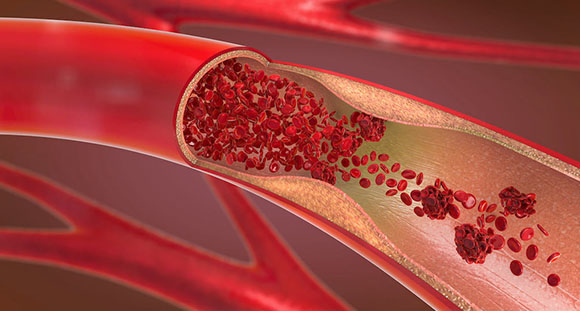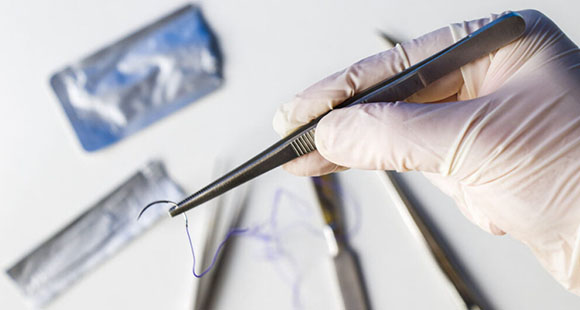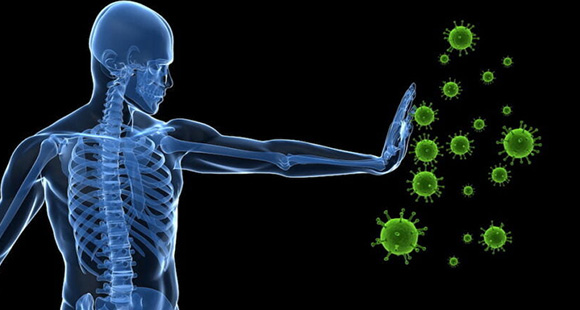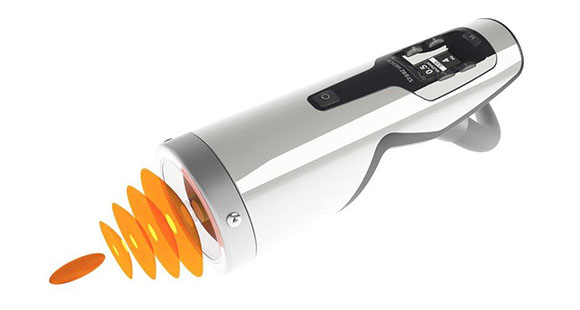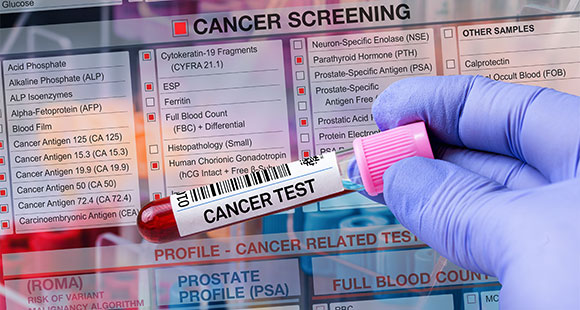
Early detection can be crucial for improving health outcomes
Our tests are simple, rapid, highly accurate, and utilise the most advanced tests, providing faster results with detailed medical reports.
You will have a face-to-face consultation with a urology specialist who will explain and discuss the results. If the results are positive, a well-established medical pathway will be offered for prompt follow-up
Arrange Complimentary Telephone Consultation
Book a Treatment or Diagnosis
Receive More Information
Bladder cancer test - EpiCheck
A highly accurate screening test, offering advanced bladder cancer detection and surveillance.
A simple, accurate, non-invasive urine test to aid in bladder cancer detection."
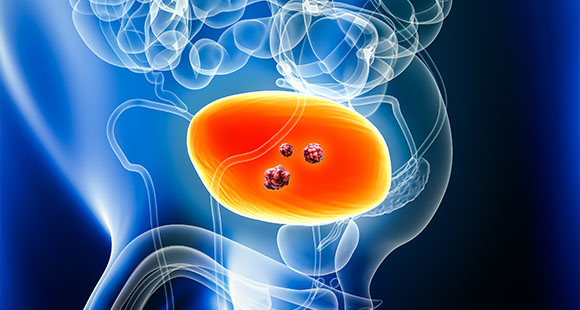
The issue
"Bladder cancer is one of the most common cancers in the Western world, with hundreds of people diagnosed each day. It is one of the few cancers where prognosis rates are declining. Various factors, including smoking and certain workplace exposures, may increase risk. A large percentage of cases are non-muscle invasive (NMIBC), confined to the bladder wall without spreading. When detected early, treatment options are available and effective in many cases.

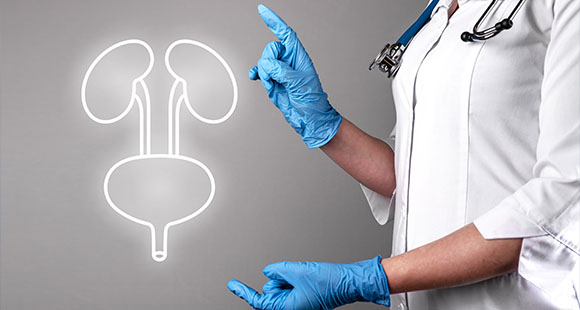
Nevertheless, even when bladder cancer is identified early and treated appropriately, recurrence can occur in some cases. Recurrences may happen along the urinary tract, including the kidneys, ureters, prostate, urethra, or bladder.
Regular monitoring post-treatment is recommended, typically involving cystoscopies. While effective, cystoscopies can be invasive and may carry some risks, including discomfort, infection, and bleeding. They may yield negative results in many cases, and can sometimes miss bladder cancer recurrences. There is a growing need for a non-invasive, reliable, and straightforward tool to detect and monitor non-muscle-invasive bladder cancer

Developed by Nucleix, Bladder EpiCheck® provides a urine test for detecting early and recurrent bladder tumours. The test analyses changes in DNA methylation markers to help identify high-risk bladder cancers.
The test provides a positive or negative indication of bladder cancer presence. It has a high Negative Predictive Value (NPV), meaning a negative result accurately excludes bladder cancer in many cases, independent of human interpretation.
For early detection: Bladder EpiCheck® may be used for the early identification of bladder cancer and upper tract urothelial carcinoma (UTUC) in patients presenting with haematuria, other urinary tract symptoms, or suspicious findings. Patients with a positive test result may be advised to undergo cystoscopy for further evaluation.

Find out more how MansMatters can help you.
Contact us for a complimentary 20-minute consultation with our men's health specialists.
Arrange a Free Telephone Consultation
Book a Treatment or Diagnosis
Receive More Information
Lung cancer screening
A highly validated blood test for the early detection of lung cancer
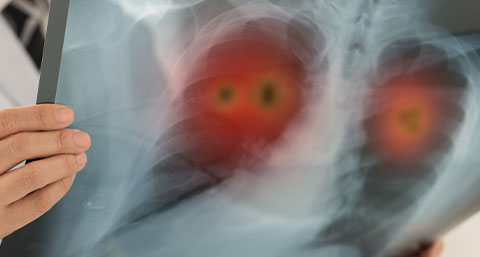
WHAT IS THE EARLYCDT LUNG TEST?
EarlyCDT Lung is a highly validated blood test for detecting lung cancer. It can identify lung cancer earlier than standard clinical diagnosis, potentially up to several years in advance. This simple blood test detects circulating autoantibodies produced by the body's immune system in response to lung cancer.
Lung cancer carries a high mortality rate and is one of the cancers with the poorest five-year survival rates. Its lethality is due to non-specific symptoms, which often result in patients seeking medical attention only once tumours have reached a critical size or metastasized to lymph nodes. However, when lung cancer is detected early, before symptoms appear, the chances of successful treatment can improve, with five-year survival rates reaching up to 90% in the earliest stages.

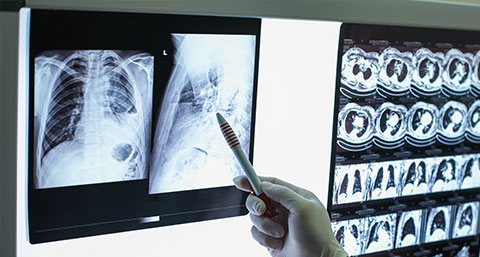
EarlyCDT serves two purposes:
The NHS has begun using CT scans as part of screening to detect lung nodules, which may then be biopsied to assess for malignancy. However, there are limitations in screening availability across the UK, and CT scans can result in Indeterminate Pulmonary Nodules (IPNs) for nodules measuring between 4-20mm, which may not be large enough for biopsy. Patients with IPNs are typically monitored with regular CT scans. If a nodule grows sufficiently for biopsy, early detection and treatment may still offer better outcomes
- Screening for lung cancer
- Assessment of IPNs to prioritise for biopsy
It requires only a small blood sample, obtainable at our clinic.
WHAT DO THE RESULTS INDICATE?
1. EarlyCDT informs you about the level of each tested antibody: whether it is low (insignificant level), moderate, or high. It then provides an overall assessment for all antibodies as Low, Moderate, or High.
2. This outcome is then combined with your pre-test risk score derived from a published risk-score model to compute your new Post-Test Risk of lung cancer.
3. Your test provider will communicate these findings to you. If you receive a high-risk result, it is recommended that you undergo a CT scan.
EarlyCDT boasts a Negative Predictive Value of 99.3%, meaning lung cancer is accurately ruled out in 99.3% of cases.
WHY CHOOSE EARLYCDT? - THE ECLS NHS TRIAL
The Early detection of Cancer of the Lung Scotland (ECLS) trial was conducted in Scotland by the NHS and involved 12,208 patients, making it the largest randomized controlled trial worldwide using blood biomarkers for lung cancer detection. Using EarlyCDT, 41.1% of cancers detected were at an early stage (1 or 2), compared to only 26.8% using standard clinical practice. This represents a 36% reduction in late-stage diagnoses, highlighting the test's effectiveness in identifying lung cancers significantly earlier than conventional clinical methods.
Based on the trial results, it was estimated that testing 10,000 high-risk patients with EarlyCDT to triage for CT scans could save £964,280 and reduce the need for 9071 CT scans.
WHO IS EARLYCDT RECOMMENDED FOR?
- Individuals aged over 50 with a smoking history equivalent to 20 pack-years (equivalent to smoking 20 cigarettes per day for one year).
- Individuals aged between 45-49 who are at heightened risk of lung cancer, such as smokers or ex-smokers, those exposed to secondhand smoke, individuals who have undergone radiation therapy, exposure to radon gas, exposure to asbestos or other carcinogens, and those with a family history of lung cancer.
HOW TO ACCESS EARLYCDT?
Through a private GP/urologist or urology specialist: You can obtain EarlyCDT by consulting a private GP or consultant. During your consultation, the consultant will review your clinical data, family history, and address any concerns you may have. They will take a blood sample and typically schedule a follow-up consultation to discuss the results. They can advise on additional monitoring or investigations.
Find out more how MansMatters can help you.
Contact us for a complimentary 20-minute consultation with our men's health specialists.
Arrange a Free Telephone Consultation
Book a Treatment or Diagnosis
Receive More Information
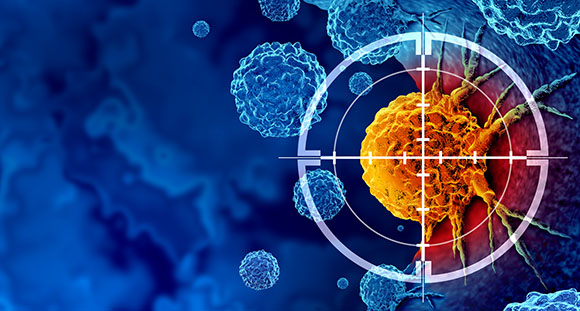
DNA cancer genetic screening
A simple saliva sample is analysed to examine 31 genetic variants that may be associated with an increased risk of certain cancers. If any variants are detected, their implications and any recommended actions will be thoroughly explained during genetic counselling. Understanding your genetic predisposition to various cancers can help you make informed decisions about lifestyle and encourage regular check-ups, potentially aiding in the earlier detection of cancers. This information may also help your family make informed decisions regarding their health. The test is suitable for adults over 18, especially those with a family history of cancer

WHAT IS HEREDITARY GENETIC TESTING FOR CANCER?
Our DNA consists of numerous genes, each serving different functions. Genes exist in various "versions" known as gene variants, contributing to individual differences such as appearance, abilities, and personalities. However, some gene variants increase the risk of diseases, including cancer. Certain variants affect the initial processes that lead to cell malignancy, impacting multiple types of cancer rather than specific tissues or organs. Other genes specifically elevate the risk of particular cancers; for instance, variants in the BRCA1 and BRCA2 genes are closely linked to breast and ovarian cancer.
Having these variants does not guarantee cancer will develop; it indicates an inherited higher risk through DNA. Environmental factors also play a significant role in cancer risk, such as smoking, UV exposure, and contact with harmful chemicals. Conversely, factors like a balanced diet and exercise can reduce cancer risk. Overall, it's estimated that 5-10% of cancers involve genetic variants contributing to susceptibility.
Hereditary cancer testing identifies these risk variants, informing individuals of their genetic predisposition to cancer. This knowledge empowers individuals to adapt their lifestyle and engage in a care pathway involving more frequent screening, enhancing the chances of early cancer detection if it arises.
WHO SHOULD UNDERGO HEREDITARY CANCER TESTING?
A genetic basis for cancer is suspected when certain traits or recurring cancer occurrences are observed within a family. These traits include:
- Early onset of cancer
- Multiple primary tumours
- Tumours in multiple sites
- Bilateral tumours in paired organs
- Same type of tumour among relatives
- Rare types of tumours
- Tumours associated with congenital defects
Having any of these cancer features in your immediate or extended family suggests the possibility of inheriting genetic variants that increase cancer risk. Undergoing a genetic test allows you to identify these risk variants and make informed decisions regarding lifestyle changes and screening. If your test indicates an elevated risk, you may consider encouraging family members to undergo testing as well.
However, genetic mutations can also occur randomly during reproduction, resulting in a risk variant even if your parents do not carry it. Additionally, you may have inherited a risk variant from your parents even if they did not develop cancer themselves. Therefore, we offer hereditary cancer testing to individuals aged 18 and above, regardless of personal or family cancer history.
WHAT HEREDITARY TESTING DO WE OFFER?
- Comprehensive Hereditary Cancer Testing Panel (31 genes)
- Hereditary Breast Cancer Panel
- Hereditary Breast and Gynaecological Cancer Panel
- Hereditary Prostate Cancer Panel
- Hereditary Colorectal Cancer (Colon cancer, including Lynch syndrome) Panel
- Hereditary Melanoma Cancer (Skin cancer) Panel
- Hereditary Pancreatic Cancer Panel
You will be offered a consultation with a genetic counsellor following your hereditary cancer test, who will be able to fully explain the results and implications.
WHAT DO THE RESULTS MEAN?
The report issued will detail all actionable findings from the hereditary cancer panel. If a genetic variant is detected, the report will outline its impact, implications, and recommended actions, which will be thoroughly explained to patients during genetic counselling. Our genetic counsellor will also discuss the health implications for patients and their families.
If no clinically significant variant is identified, the report will explicitly state this.
Prostate Cancer Blood Test
Highly accurate testing using PROCLARIX or STOCKHOLM 3 TEST
Our Urology specialist will review your clinical data and family history, addressing any concerns you may have. A blood sample will be taken, and a follow-up consultation will typically be arranged to discuss the results. They will provide guidance on any further monitoring or investigations, if necessary
HOW DOES PROCLARIX WORK?
Next-generation screening
Proclarix, developed by Proteomedix, is a simple blood test that analyses protein biomarkers to assess the risk of aggressive prostate cancer in individuals with a PSA level between 2 and 10 ng/nL. This range is known as the "grey area," where elevated PSA levels may or may not indicate prostate cancer. Moreover, having a PSA within these "normal" ranges does not definitively rule out prostate cancer, which can be confusing and concerning for many men. Proclarix provides clarity in these ambiguous PSA results by offering a more precise and specific risk score for aggressive prostate cancer. A high-risk Proclarix score suggests the need for further investigation, typically an MRI scan. A low-risk score excludes prostate cancer with 95% accuracy. Proclarix can replace standard PSA testing without additional procedures, with results available within 5-7 working days.
Addressing indeterminate MRIs
Proclarix can also be utilised following an MRI scan if the results are inconclusive. MRI scans are employed in men with elevated PSA levels to detect prostate masses indicative of cancer. Subsequently, a prostate biopsy is performed to confirm the presence of a cancerous tumour. However, approximately 40% of MRI scans yield indeterminate results, where the presence of abnormality in the prostate remains uncertain. Without Proclarix, these individuals would undergo biopsies, resulting in over 50% of biopsies being negative or clinically insignificant. This overdiagnosis and overtreatment can be mitigated by using Proclarix after indeterminate MRI scans. The blood test helps clinicians determine whether a biopsy is necessary based on more accurate risk assessment.
HOW DOES STOCKHOLM3 WORK?
Stockholm3 is a blood test designed for the early detection of prostate cancer. It assesses the levels of 5 protein markers and examines the presence of multiple genetic markers. The result is a risk score indicating the likelihood of prostate cancer that may spread. Elevated risk suggests referral to a urologist for further evaluation, whereas low or normal risk indicates a follow-up test within two to six years.
Since 2019, Stockholm3 has been integrated into clinical practice in Sweden, Norway, and Finland. It is endorsed by European and American prostate cancer guidelines and has been evaluated in trials involving over 75,000 men. Several major healthcare providers across Europe utilise Stockholm3.
Early detection is crucial for effectively identifying prostate cancer. Evidence shows that 30-50% of aggressive prostate cancers are detected in men with normal PSA results (below 3 ng/ml). Stockholm3 offers significant advantages over PSA testing:
- Stockholm3 identifies high-risk individuals with normal PSA results.
- Stockholm3 detects twice as many men with aggressive prostate cancer requiring treatment compared to routine PSA tests.
"Stockholm3 reduces over-detection and unnecessary procedures/anxiety." It is important to note that many men have benign prostate tumours that do not pose a threat during their lifetime. Using Stockholm3 prior to MRI helps minimise over-detection by identifying men at low risk of harmful prostate cancer, even with elevated PSA levels. For many men, this means avoiding unnecessary and uncomfortable procedures like prostate biopsy, along with the associated stress and wait for results. Stockholm3 has been shown to halve the number of unnecessary biopsies compared to routine PSA testing in clinical settings.
"Based on evidence from large-scale scientific studies." Developed by researchers at the Karolinska Institutet, Stockholm3 has been extensively evaluated and validated in Sweden, Norway, Finland, Germany, and Switzerland, involving over 75,000 participants. A recent comprehensive validation study was conducted in the USA. Over 45 scientific articles on Stockholm3 have been published in esteemed journals such as The Lancet Oncology and European Urology. Stockholm3 has received consecutive awards for its research from the European Association of Urology (EAU) in 2021, 2022, and 2023. The latest study published in The Lancet Oncology was honoured with the EAU Prostate Cancer Research Award 2022. More information on Stockholm3 publications can be found here.
WHAT DO THE RESULTS INDICATE?
The Stockholm3 test provides a risk score that categorises the likelihood of aggressive prostate cancer into elevated risk, normal risk, or low risk. It also includes clear treatment recommendations, facilitating decision-making for the treating doctor regarding potential further actions. If the risk is elevated, referral to a urologist for additional evaluation is advised, while men classified as having low or normal risk are recommended to undergo a repeat test within two to six years. Nearly half of men aged 50 to 70 years exhibit a low-risk profile and may defer testing for up to six years.
The target demographic for Stockholm3 comprises men aged between 45 and 74 years.
Knightsbridge
Richmond
Related Medical Conditions
Lifestyle
Men's Health
Erectile Dysfunction & Other Conditions
Useful Links
MansMatters is a Division of:

Privacy Policy | Terms & Conditions

